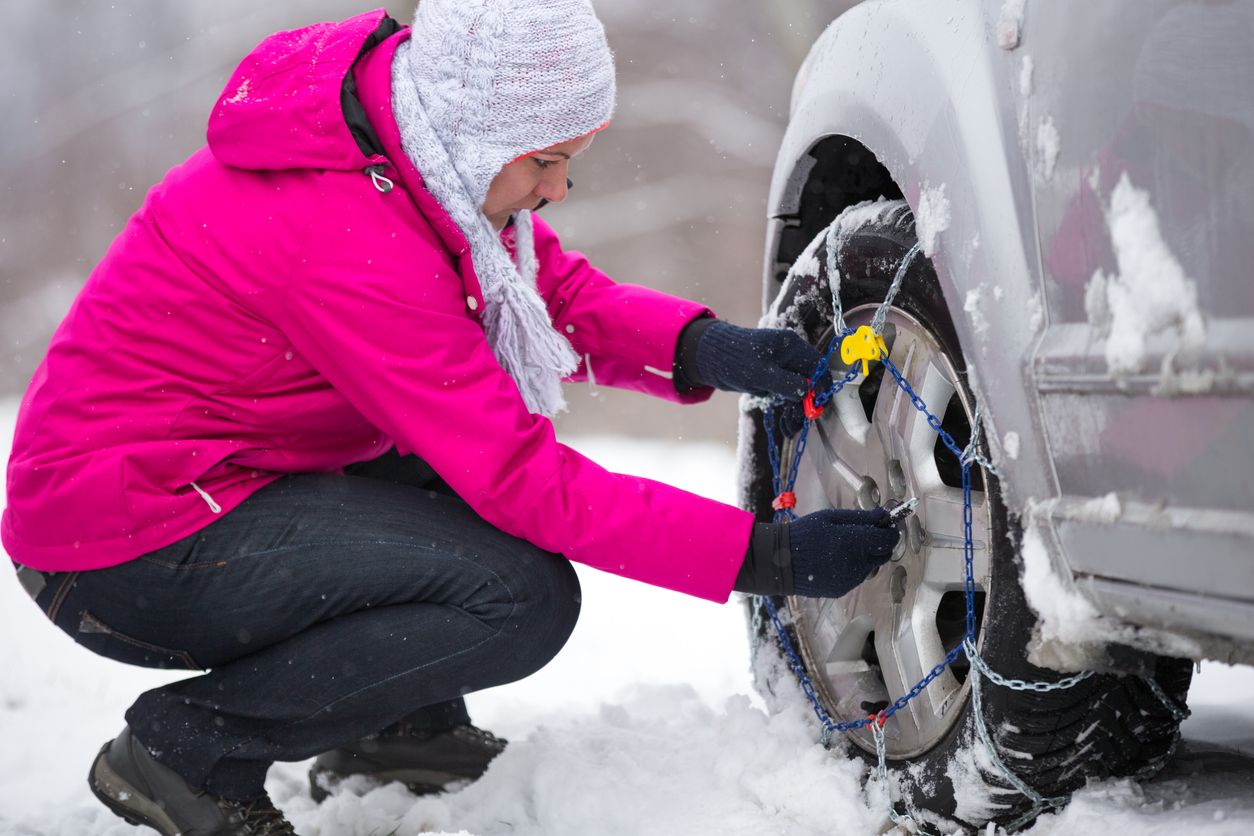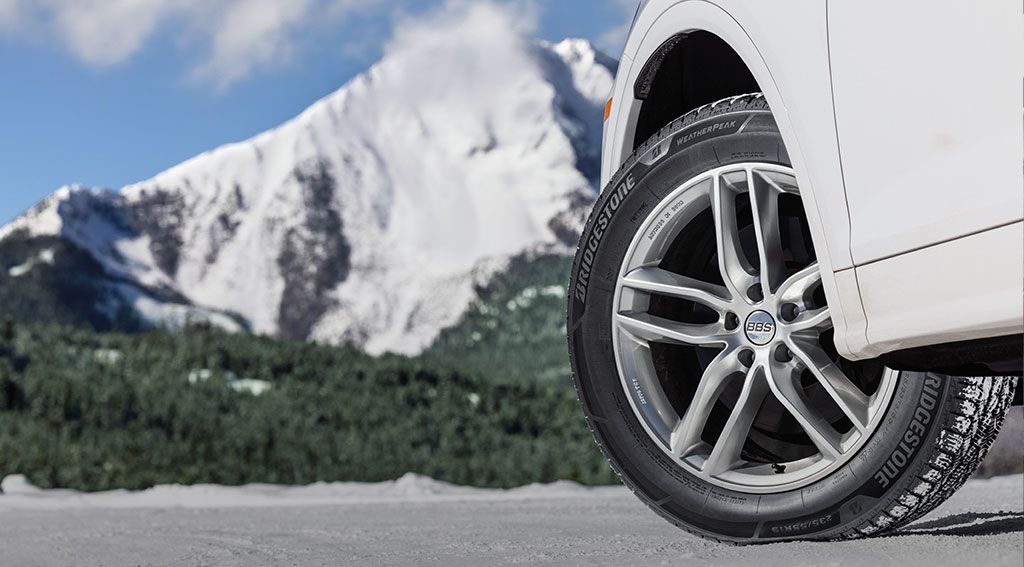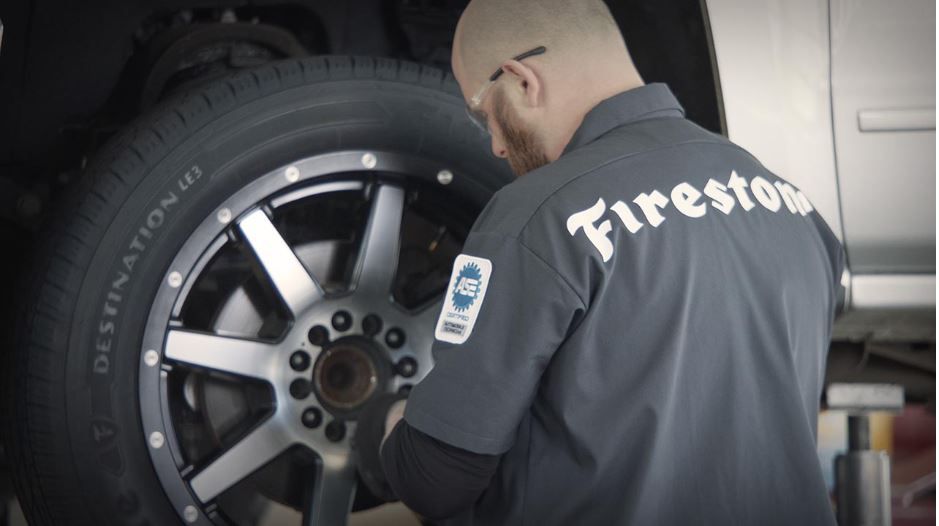
Step-by-Step Guide: How to Put On Snow Chains and Drive Safely
As winter approaches, it’s time to prepare for snowy, icy roads. This guide explains how to put snow chains on a tire, if you need snow tires or not, and more.
Read More
It's a tough road out there, and your tires bear the brunt of potholes, broken glass, nails, screws, and anything else that can puncture a tire. Firestone Complete Auto Care's flat tire repair services are the best in the business. We've been repairing tires since 1926, and we take pride in repairing America's tires. When tire damage strikes, come to Firestone Complete Auto Care–the tire repair shop you can trust.
If you suspect something is wrong with your vehicle's tires, don't hesitate to come into a Firestone Complete Auto Care near you. If your Tire Pressure Monitoring System (TPMS) light is on, you've hit something on the road, your tire is losing air, or maybe something just doesn't feel quite right, bring it in. One of our expert technicians will take a look and tell you if you need to repair or replace your tires.
Driving on a damaged tire can lead to additional (and more costly) rim damage and repairs, so it's best to have your tires examined at the first sign of trouble. The solution might be as simple as needing one of our patch plugs if the tire puncture is addressed early on. In other cases, a leaking valve stem or valve core may need to be replaced with a new one or the TPMS sensor needs to be reprogrammed or replaced. Visit your nearest Firestone Complete Auto Care, and we'll take care of you and your vehicle tire repairs.
To ensure a safe drive that doesn’t damage your rims or create more expensive repairs, change your flat tire with your spare tire before coming into your local Firestone Complete Auto Care center for flat tire repair.
It’s tempting to replace just the tire that's damaged, but replacing one tire at a time can present challenges down the road since the one tire will have a different tread depth and thus different accelerating, braking, and cornering abilities than all of the others.
Few things are more inconvenient than a flat tire —except back-to-back flat tires. Learn the reasons why you keep getting flat tires and what you can do to help prevent flat tires from deflating your spirits!
If your vehicle hits a pothole in the road, you may experience steering and suspension system misalignment and/or damage, tire punctures, bent rims, and more. When your vehicle experiences a sudden jolt from a pothole run-in, timely inspection is highly recommended.
Pothole damage may not be obvious right away, but it can wreak havoc on your entire car if it’s not addressed quickly and fixed right the first time. If you've had a recent run-in with a pothole, head to your local Firestone Complete Auto Care for a Complete Vehicle Inspection to check for any issues.
A tire plug is a quick fix for a tire that's leaking air from a nail or similar object that has punctured the tire. A tire plug fills the hole of the tire but is not reliable without a tire patch and not recommended to use alone. A patch is applied to the inside of the tire to further prevent an air leak and helps hold the plug in place. This allows a tire with ample useful life left in it to hold air reliably and keep you on the road for longer.
Run flat tires allow you to drive on a flat tire for a limited time with lesser risk than non-run flat tires. A Run Flat tire could be repaired if a nail or object is caught before tire damage occurs. However, if the tire is permanently damaged, it is required to replace a Run Flat tire with a new one.
The Tire Pressure Monitoring System light will illuminate if tire pressure is too low or part of the TPMS system has malfunctioned. Important TPMS warning light behavior:

As winter approaches, it’s time to prepare for snowy, icy roads. This guide explains how to put snow chains on a tire, if you need snow tires or not, and more.

Are studded tires better than snow tires? How do you know what’s best for your vehicle? Discover the pros and cons of studded vs studless winter tires here.

On the track or street, tires are one of your vehicle’s most critical components for performance and safety. Here are 5 ways to know if you need new tires.